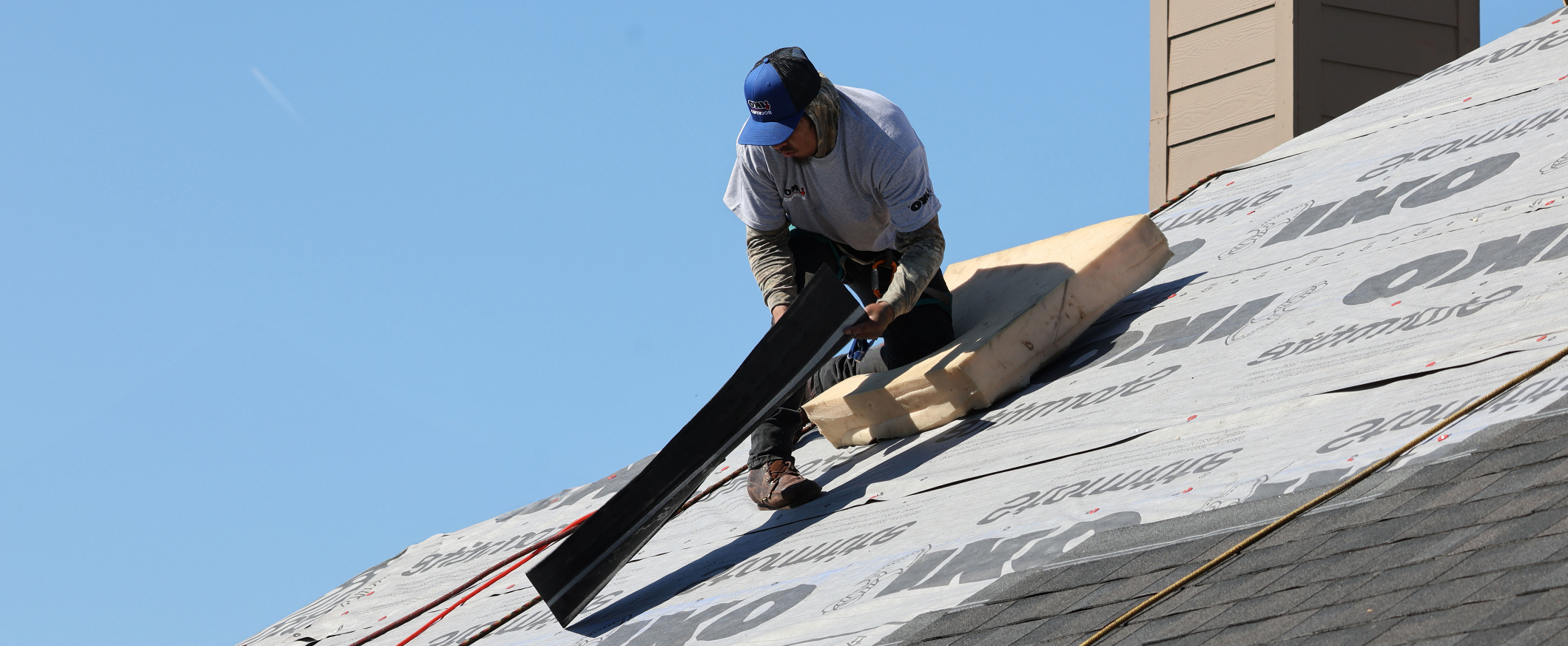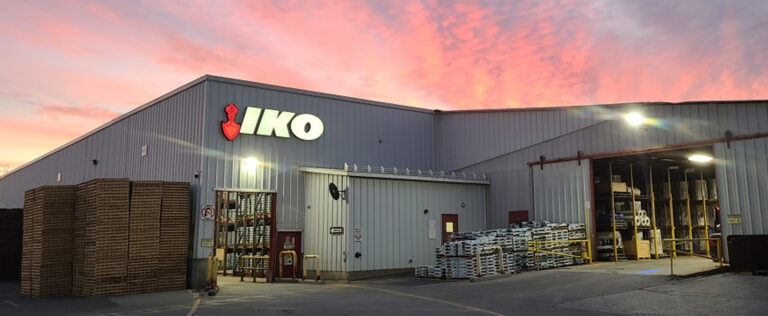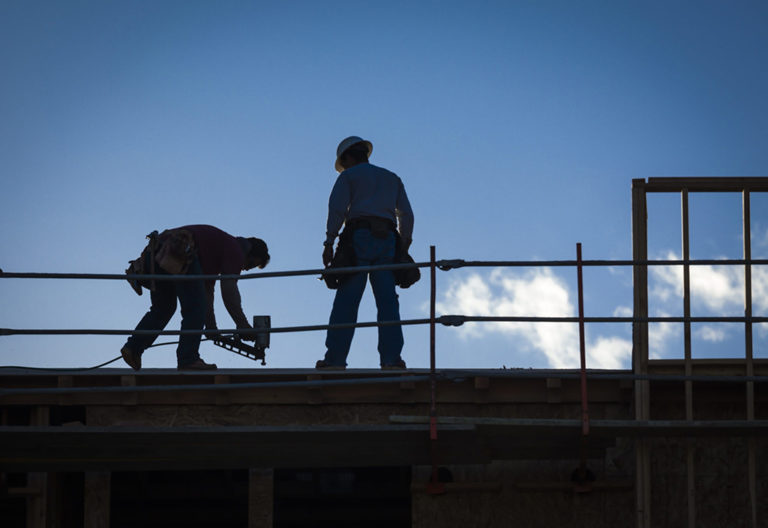Roofer Workplace Safety: Prevent Accidents and Ensure OSHA Compliance
Roofing is dangerous work. Between working at height, walking on slopes, handling sharp tools and navigating unstable surfaces, there are a lot of risks that can pose serious injuries. This type of work should always be left to professionals, who have a legal and ethical responsibility to follow proper fall protection procedures and government safety guidelines.
We’ll walk you through common roofing hazards and the best ways to stay safe on your next roofing job. This article is intended to provide general information, so be sure to check the requirements in your local jurisdiction before work begins.
Identifying and Mitigating Common Roofing Hazards
It’s your job to make sure all safety hazards on a job site are removed before work begins. The United States (OSHA) and Canadian (OHS) each have guidelines and requirements, ensuring roofers benefit from a safe working environment. In Canada, these specific guidelines are determined by individual provinces and territories (like OHSA in Ontario), so be sure to look up local regulations before beginning work.
Some hazards, such as inclement weather, are outside of your control. Never go on a roof that is wet or icy, or on days when rain or snow is forecasted.
With that in mind, the bulk of major roofing hazards can be effectively avoided by two principles: Use the right equipment and use that equipment correctly.
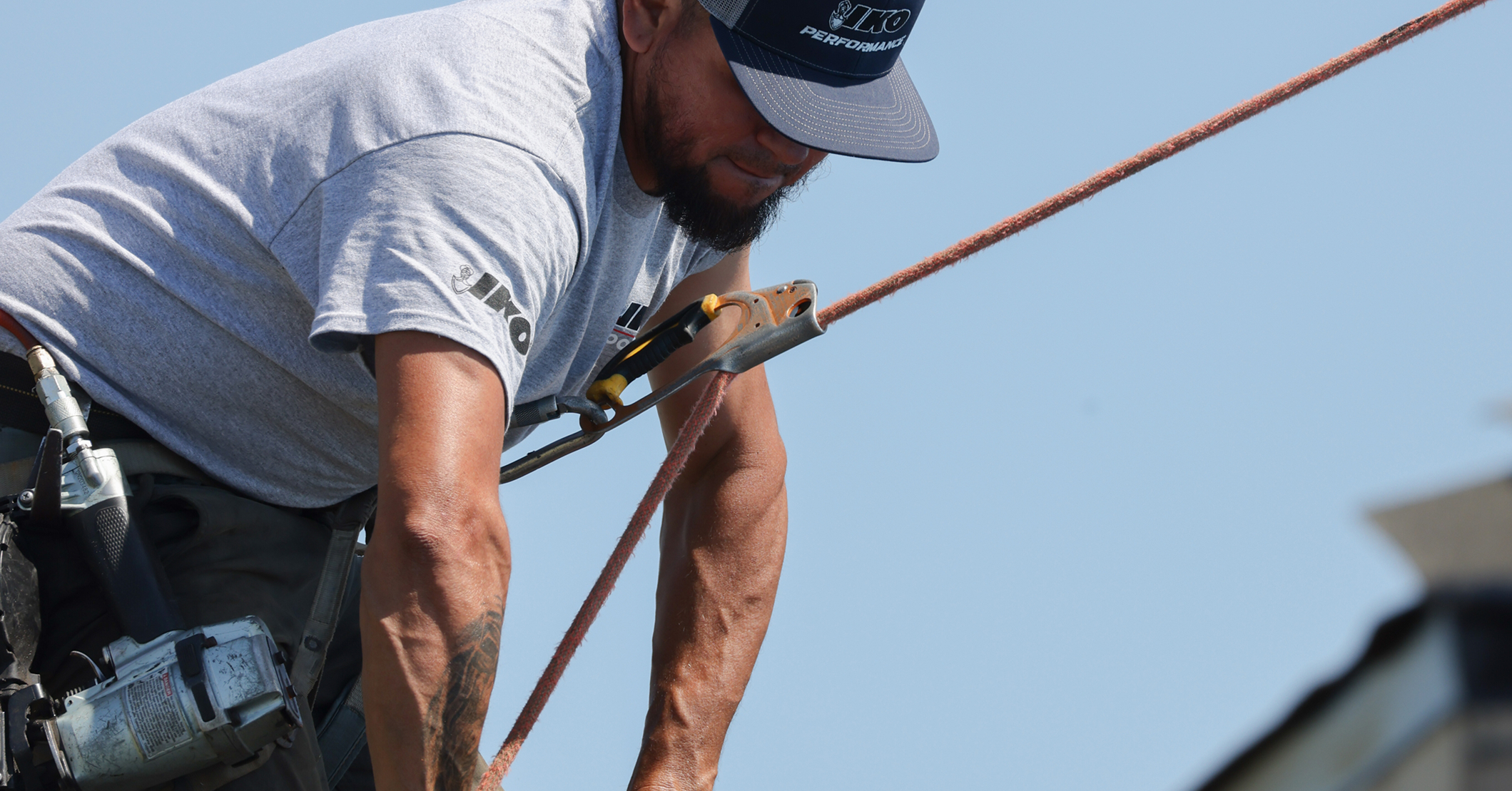
Use the Right Equipment
Coming with the right equipment offers peace of mind to any job. Below is the safety equipment every contractor should bring to a job.
Personal Fall Arrest System (PFAS)
A Personal Fall Arrest System (PFAS) is an approved full-body harness roofers should use on every job for fall protection. It allows roofers to work on the edge of a roof without the risk of slipping and falling off.
OSHA requires roofers to use a PFAS if you are working on a high-sloped roof that is six or more feet off the ground. In Canada, each province’s OHSA has different requirements for fall protection harnesses when working at heights.
Make sure you and your workers have undergone fall protection training before using a PFAS.
Guardrails
Guardrails are a fixed system used to protect workers from falls when working at heights. They act as a visible and physical barrier for enhanced roofing safety and fall protection. Per OSHA regulations, guardrails are capable of withstanding, without failure, a force of at least 200 pounds.
Proper Footwear
The right anti slip footwear can protect you from slipping, stepping on exposed nails and falling debris. Your shoe’s sole should also have a soft impact so you don’t damage shingles as you walk along the roof.
Other Personal Protective Equipment (PPE)
Knee pads, hearing protection, skin protection, gloves and eye protection can all help make jobs more comfortable and protect you from harm. While not always necessary, it’s a good idea to have this equipment on hand when you need it.
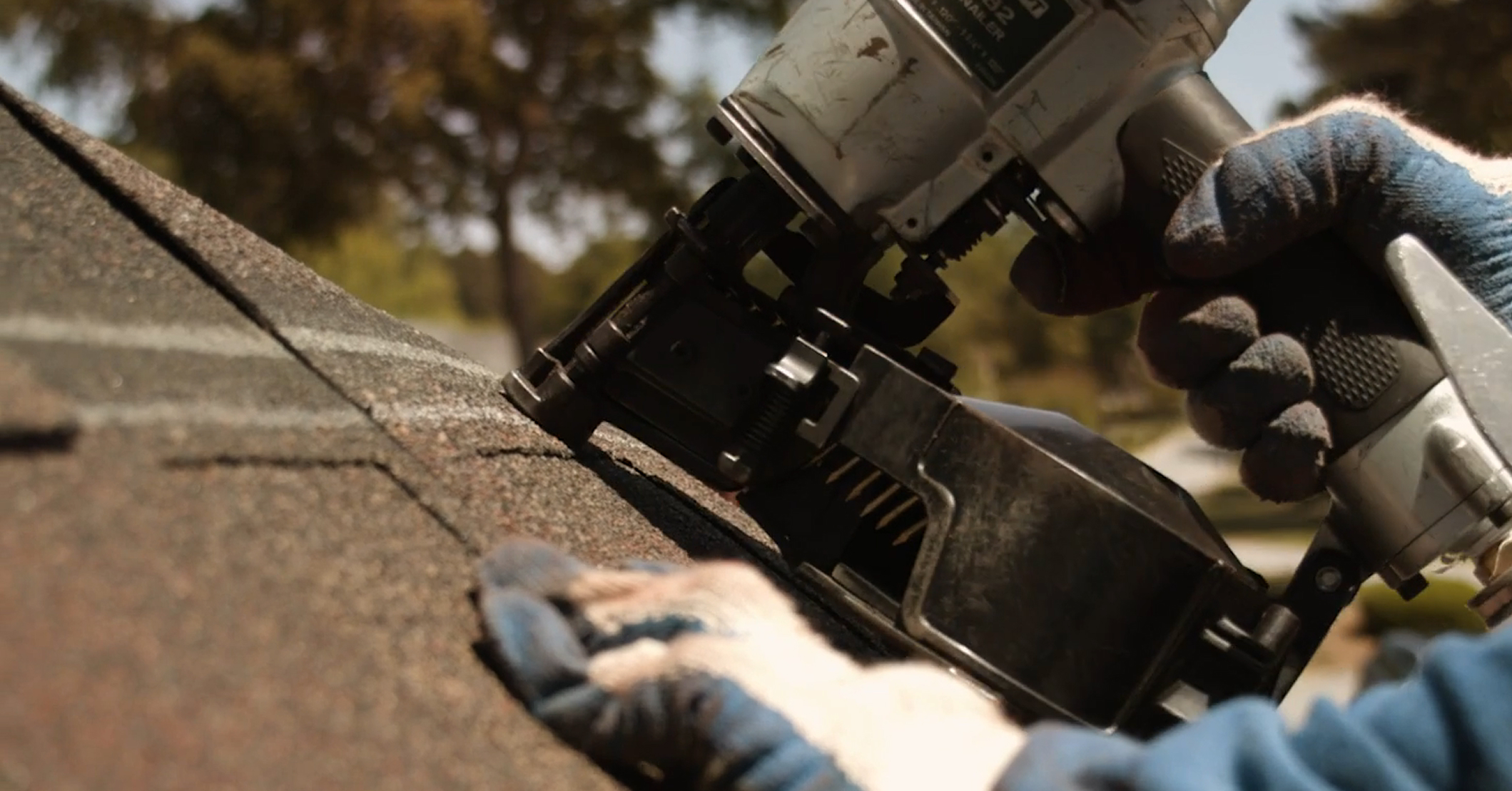
Use the Equipment Correctly
Even the most seasoned professionals have to be mindful when using their roofing equipment. Using equipment correctly and carefully every time, no matter how comfortable you are with the process, can help prevent accidents. Let’s consider some common sources of injury on a roof job.
Nail Guns
Nails guns can speed up roofing work. They are also responsible for around 37,000 emergency room visits each year in the U.S. alone. The CDC recommends using full sequential trigger nail guns, meaning the contact tip must be pressed and the trigger squeezed for each nail.
Regular training for nail gun usage is a must. In your training, cover gun parts, trigger mechanisms, inspection, loading, power sources, proper technique and working in awkward positions. Also train on accidental double fires, discharges and ricochets and what to do in those situations.
When you’re on the job, establish written rules for nail gun usage. Inspect your nail guns daily and remove any malfunctioning guns.
Ladder Safety
Extension ladders are common for easy roof access and work. Ladders are rated by how much load they can support, inclusive of a person and materials they are carrying. These ratings range from Light Duty (200 pounds) to Extra Heavy Duty (375 pounds). You will want a ladder that is at least Heavy Duty (250 pounds).
For most jobs, metal ladders will work fine. If you need to put the ladder near electrical hazards, such as wires or power lines, use a fiberglass ladder to avoid risk of electrocution.
When placing your ladder, angle the ladder at a 4-to-1 slope (one foot out for every four feet up). It must extend at least three feet above the roof for safe access. Check surroundings for stability, securing the top and bottom of the ladder before you begin your climb.
When climbing the ladder, maintain a three-point contact (two hands and one foot or one hand and two feet) at all times.
Always face the ladder when climbing. Avoid reaching sideways or handling heavy materials when climbing the ladder (unless you are wearing a PFAS).
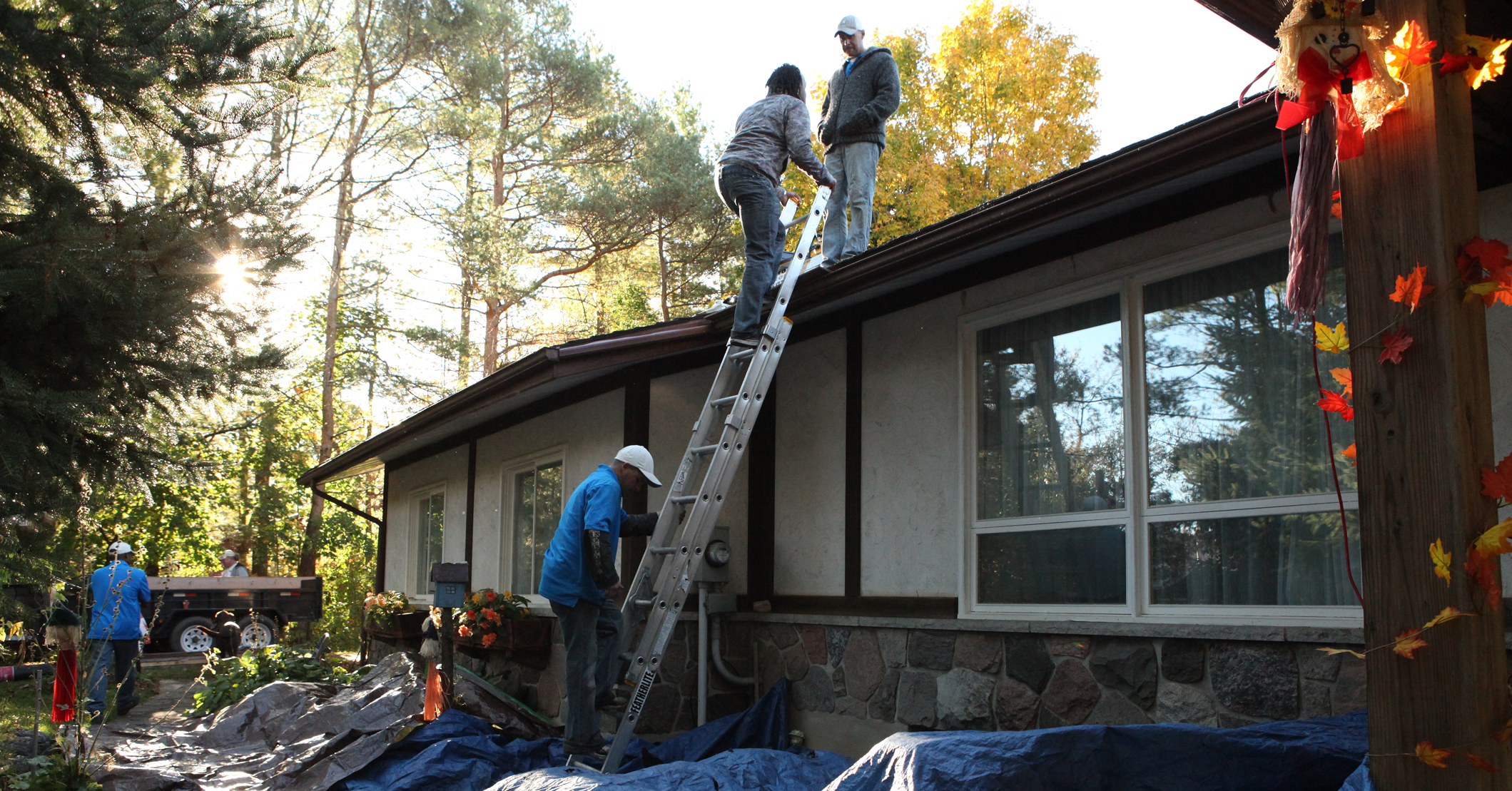
Preparing the Work Area and Job Site
Roofing work is inherently dangerous. Heights, electrical hazards, unguarded edges, weak roofs, holes, trip hazards — there is a lot you must be mindful of. That’s why prepping your work area before you start any job can help prevent accidents and give you peace of mind as you begin the job.
Inspect Before You Begin
Conduct a thorough inspection before starting work to identify potential hazards, including ground conditions for ladder placement and overhead powerlines. Inspect the roof to ensure it can withstand your weight. Clear any debris around the job site that may pose a fall or trip risk.
Secure the Perimeter
Rope off work areas, either physically or verbally by informing the homeowner where you’ll be working. You don’t want any vehicles or people coming through and interfering with your workspace, as they can introduce new hazards you aren’t aware of.
Prepare Your Materials
Organize all roofing materials before you begin working. Plan routes for material delivery vehicles and designate a spot where the materials will be unloaded that is close to the work area. Secure ladders and install safety measures like guardrails and PFASs.
Safety Is the Best Tool on the Job
By using the right fall protection equipment, following ladder safety best practices and thoroughly preparing your job site, you can significantly reduce the risk of injury. Safety starts before the first shingle is nailed and continues until the final cleanup. Make it a core part of your roofing work, every time—and always refer to OHS/OHSA and OSHA for formal guidelines.
